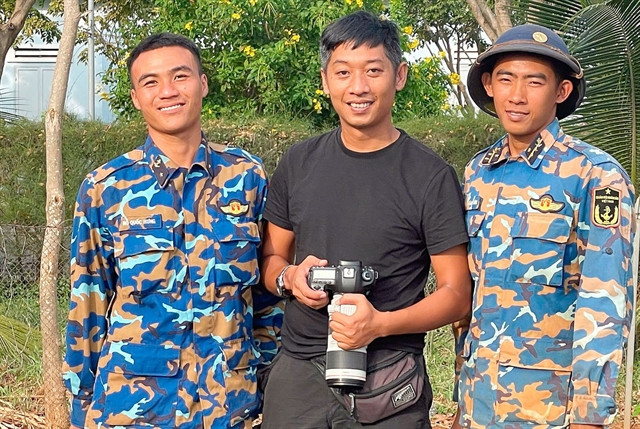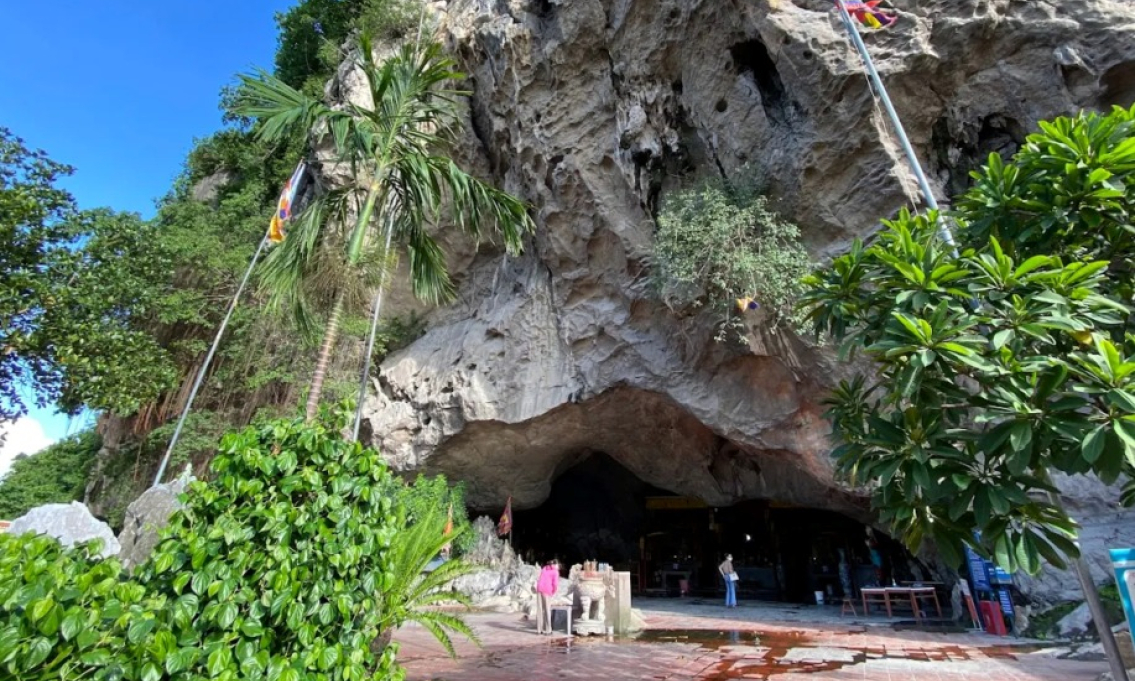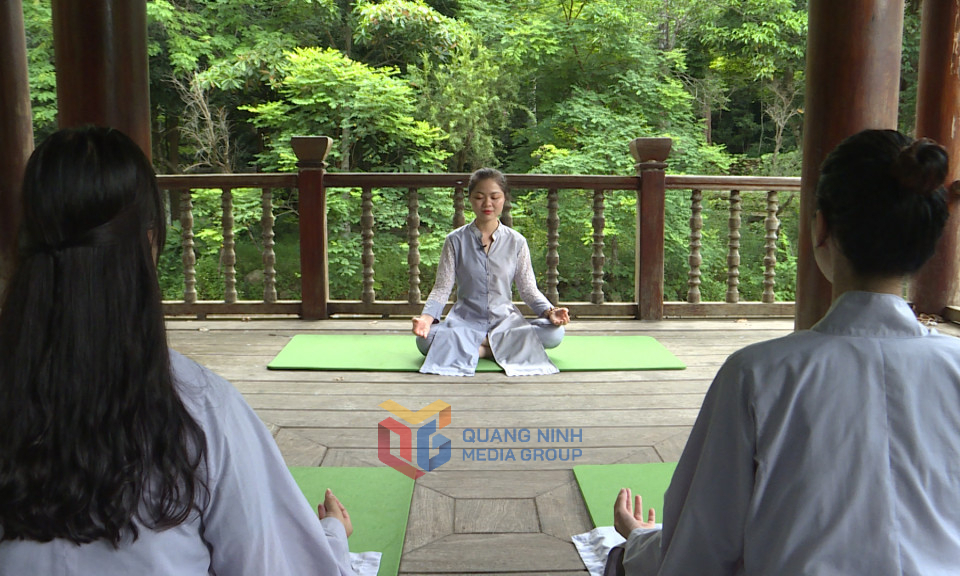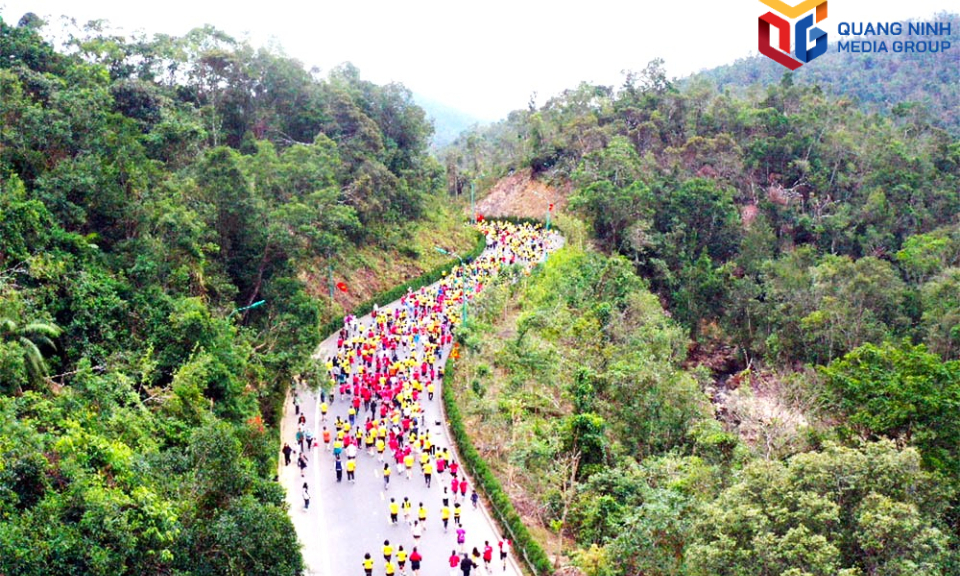Journalists spread information with captured moments
Behind the emotional photos is the silent commitment of photojournalists, who capture and spread information through moments every day.
In journalism, images are the most powerful language, touching the hearts of the public in a way that words sometimes cannot.
Behind the emotional photos is the silent commitment of photojournalists, who capture and spread information through moments every day.
Phạm Nguyễn, a photojournalist of Tiền Phong (Vanguard) Newspaper, still remembers clearly the time he was at a special class at the Pediatrics Department of the HCM City Oncology Hospital in 2019.
In just 20 minutes, he took photos of teacher Hồng, a small woman who had been teaching children with cancer for more than 10 years.
“There was no sound of a school drum, but the class was full of life force,” Phạm Nguyễn told baotintuc.vn. “The teacher had lost dozens of students over the years. But she still suppressed her pain to smile and continue teaching,” he said.
“Hồng told me ‘as long as there are students, there will be class’,” the journalist recalled.
The scene that moved him the most was when he saw thin hands covered with bandages still trying to hold pens.
“Many children had just received medicine, their hands were shaking, but they still wrote each letter carefully. Their innocent eyes shone with a faint but unfading light,” he said.
In that space, life and death coexisted, but never defeated the spirit of the young warriors.
On the wall, the slogan “Never give up your dreams” was hand-painted, adorned with hundreds of meticulously folded paper cranes – each one representing a fragile wish.
“I raised my camera, my hands shaking. No one said anything, but I knew everyone was fighting silently,” the journalist emotionally recounted.
The photo that haunted him to this day is the moment when teacher Hồng gently adjusted the pen grip of a child who was gasping for breath.
“A bow, a look, a heart”, he left the classroom, carrying with him the dreams that were being written with young hands full of needle marks. “There are things that cannot be told in words, because emotions surpass words”, he said.
His works then won a National Press Award.

For Lê Mạnh Linh, a photographer of Tin Tức and Dân Tộc Newspaper of Vietnam News Agency (VNA), each shot is to pursue a moment that touches his heart.
"After many years working in the field of news and defence photography, I realised that spreading information is not just about recording events but hunting and capturing 'golden moments’”, Linh said.
In particular, during the historic April reporting trip to celebrate the 50th anniversary of the National Reunification, each photo he took was filled with sweat, emotion and national pride.
“After a trip taking photographs from a helicopter flight, I came home exhausted but my passion has never faded,” the photographer said.
"At the April 30 event, instead of choosing an easy position on the stage, I went to the upper floor of the Rex Hotel - a place with a panoramic view to "hunt" for unique moments,” he said.
“The moment the Su-30MK2 soared through the sunny sky of HCM City and fired thermal bullets, I boldly chose a telephoto lens, instead of the usual wide angle. It was a risky decision, but it created a series of photos that were both informative and artistic," he said.
“There were days I had to stay hours in streets or spend nights in the office so that I could work regardless of time. For me, bringing news photos to readers is not only a job but also a mission,” he said proudly.

Meanwhile, photojournalist Nguyễn Luân from the VNA's Vietnam Pictorial Magazine, finds professional meanings in trips to remote and difficult lands with emotional stories.
For him, each business trip leaves an indelible mark.
The most profound was a trip to Trường Sa Archipelago, where he accompanied a group of overseas Vietnamese to visit the graves of martyrs on the island.
"I was very moved to witness the affection of the overseas Vietnamese to the fallen soldiers. No one could hold back their tears, but I had to put aside my emotions to do my duty of recording the moment,” Luân said.
“For me, the lens is the eyes of the community, a bridge to bring those sacred images to millions of Vietnamese people at home and abroad,” he said.
His photo was awarded a National Press Award.
However, the work that he was most obsessed over was a photo report about drought and salinity in the Mekong Delta in 2016.
When witnessing how people were struggling to cope with natural disasters, from rice fields drying up to clean water becoming a luxury, he could not help but feel heartbroken.
Luân recalled: "At that time, I took a photo of a female farmer holding a rice plant that was contaminated with salt and dried up. Her eyes seemed helpless with the cruel nature.”
“But thanks to those photos, many international organisations came to support the people in the area. I realised that my job is not only to record reality but also to contribute to creating positive changes for the community," he said.
According to the photojournalist, the key factor creating a good press photo is not only technique but a real emotion.
“Techniques could be trained and practised but emotion must come from empathy with the subject being photographed and life experiences,” he said.
He said that photojournalists must always raise questions of “Why am I capturing this moment?”, “What messages are the images spreading?” and “How do readers feel?”.
The self-questioning would help the work be authentic and easily reach the audience, Luân said.
“An ordinary person must also understand what the photo wants to say. We do not stand outside the event but must live in it, immerse ourselves in it to tell the story through light, composition and moments,” he said.
“However, taking a photo may only be a moment, but to feel the full depth of the photo takes a lifetime."
Each photojournalist has a story, a different way of feeling and expressing, but they all have one thing in common that they do not just take pictures, but touch life, collect memories and portray the era with a wordless language.
Thanks to those moments, information is spread not only by words but also by the heart.






